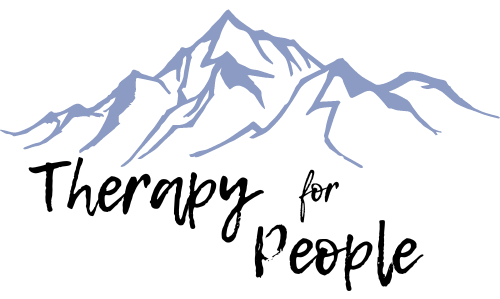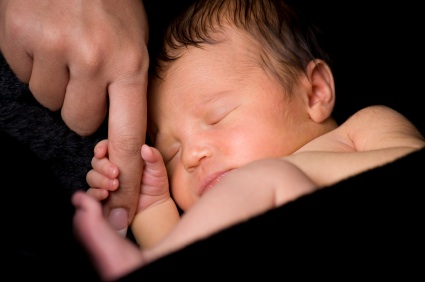Whether you’re in the business of helping others or interested in helping yourself, we’ve all heard about ‘attachment.’ How often have you joked about your ‘attachment issues’ or heard or read about various attachment styles? So, what is the nature of attachment?
What does ‘attachment’ really mean?
The Nature of Attachment
Attachment is a simple word for a very complex human emotional and physical process and experience. When babies are born, their little brains and bodies understand at a visceral level that they are not equipped to survive independently. In fact, human children remain dependent on their parents for far longer than other mammals, a natural consequence of natural selection and the optimal gestation period for human development. Children are 100% dependent on their caregivers for 18 years, or even 25 or 30. This is one of the most fundamental tenets of the human experience.
We are born vulnerable and helpless and must rely on our caregivers to give us proper care; we require our physical needs for food and water to be met. We have emotional needs as well – equally crucial for survival. For our brains to properly develop, we need physical touch and proximity to mom when we are infants. In the 1940s, upon discovering that germs cause illness, a hospital decided to keep all the babies safe by putting them in incubators and not touching them. They were shocked when the infant mortality rate sky-rocketed. They had inadvertently discovered that nurture and physical touch is a requirement for human survival.
Attachment is a ‘feeling’ – but like all feelings, it is also a series of chemical reactions and processes in our bodies.
Attachment is our brain’s way of meeting our survival needs early life. When our moms gaze down at us with love in their eyes, we gaze back. This action alone sends chemicals racing around our bloodstream – feel-good chemicals that signal our parasympathetic nervous system that all is well and fear is not necessary. These chemicals make us feel good, safe and secure. When we are afraid, and we cry, and mom comforts us, we create pathways in our brain to calm down after feeling scared.
When we feel afraid or lonely as babies and mom picks us up and comforts us, chemicals race around our bodies and our brains, and we feel safe. When we feel happy and smile, and mom smiles back, or giggles and mom giggles back, the chemicals zoom again, and a secure attachment to mom is formed.
Attachment, first and foremost, is a chemical experience like feelings are a collection of chemical responses in the body and brain.
The Role of the Amygdala
Our amygdala is the deep part of our brain connected with our limbic system. It is responsible for regulating emotions, our survival instincts, and creating memories.
When stressed, our amygdala sends distress signals, and our bodies react. Fear gets our heart racing and ready to exert energy, sadness our tear ducts overflowing. A properly functioning amygdala will then regulate a person back to baseline once the stress is gone. When the threat disappears, the amygdala sends calm signals, putting our parasympathetic nervous system to work and calming us down. Our heartbeat slows, our breath comes easily, and we feel safe again.
As children, if we are scared and cry, and nobody is there to comfort us, our amygdala never learns the pathway for how to feel calm after getting scared. This means our amygdala always fires stress signals, and the brain cannot calm itself down.
Have you ever seen a child throw a tantrum and continue to escalate? Have you seen that look in children’s eyes of panic as they experience a feeling without calming down? Those children have compromised amygdalas. These are the children who will adore video games, eating and other addictive behaviours. These external sources of comfort do the job of calming the amygdala to a certain degree. However, they are a poor substitute for the role of an emotionally available parent to help us co-regulate.
It’s easy to talk about feelings as though they are some abstract idea, something that can’t be grasped, or something to be ‘avoided’ or numbed out. But the reality is that feelings are a chemical reaction in the body, and so is attachment.
How Do We Get Hurt?
This is also the biggest challenge in human development; the lack of proper care in the earliest stages of life causes us the most pain.
When a baby is born, one of the first experiences they have is skin-to-skin contact. Their skin touches their caregiver’s skin, and their little brains light up with neurochemical and electrical impulses sent to the body. These messages say “I am safe”, “I am being taken care of”, “survival is at hand”, and “I am loved”. The language of love is a chemical one. When they age and open their eyes, they gaze up at their moms and dads, who mirror what they do, and look down adoringly at this little miraculous creation.
Attachment is formed.
Sometimes, though, the baby comes early. And rather than lying on mom’s chest, they are stuck in an incubator – experiencing cold plastic and clinical stares from doctors for the first moments of their lives. Sometimes, the mom is stressed or has postpartum depression and can’t stand the sight of their new offspring. Sometimes, mom drinks, or lacks support from her spouse, or is just unable to gather enough energy to meet the baby’s many needs.
In these moments, attachment is lost. Cortisol and stress hormones flood the system, and these chemical messengers say “I am not safe”, “I won’t be taken care of”, and “I need to figure out other ways to survive”.
Attachment trauma continues throughout childhood. Sometimes, when it comes time for the child to differentiate and experience themselves as a separate individual, the mom gets scared and clings to the child. Or gets angry when the toddler leaves and dismisses the child when they return for comfort. Sometimes, the mom covers up her feelings of loss by being critical or angry. In these moments, the child learns that it is not safe to separate and must stay clingy – in these moments, a symbiosis can be formed between mom and child.
Sometimes, the mom just doesn’t care when a child leaves, and when the child returns for support and nurturing, she ignores the child. Here, the child learns that they are on their own in the world and must become self-reliant. This child grows up to be isolated and self-reliant to a fault.
Some children get lucky and experience secure attachment. These children wonder out to explore their surroundings, and when they get tired or hurt and return to mom for love and nurturing, they are welcomed back with open arms. Once recharged and ready to explore again, the child is lovingly released back into the world, knowing that safety and security with mom are always available. In this environment, risks are mitigated by loving parents who allow their children to experience themselves as capable human beings in a safe world.
These are the lucky ones and, increasingly, the lucky few.
Most of us are disorganized or insecure in our attachments. We had to explore a world not made safe by parents, who are too busy or stressed or workaholic or alcoholic or just plain busy to pay attention. These children are left alone to fend for themselves, and their parents are busy climbing corporate ladders or dealing with their own unmet needs to be available to their children. The children of these parents often feel alone in a world full of dangers, and confusing experiences.
Adapting
We survive, we adapt, and sometimes we build resiliency, sometimes we don’t. But either way, we find ways of surviving. Mental health difficulties can always be traced back to early loss of secure attachment.
If Mom won’t take care of me, I will simply get sick all the time and demand her attention. Or I’ll be so quiet they won’t notice me, and I’ll figure out ways to survive by myself. Or perhaps I’ll be loud and rebellious so they can’t ignore me, or so successful it won’t feel lonely anymore. Whatever strategy you employ, the goal is always to try to survive and thrive in a world that hasn’t felt welcoming or safe.
These survival strategies begin in infancy, sometimes even in the womb, and continue to adulthood. These survival strategies eventually become hindrances to a happy and healthy life as adults. Being sick eventually gets in the way of living a happy and productive life, and self-reliance becomes lonely. Whatever the survival strategy, as adults, we yearn for a new experience: connection, fulfilling relationships, fulfilling careers, and joy.
How can we heal?
How do we overcome past hurts and make new decisions that help us move forward? Contrary to popular belief, simply ‘changing your thoughts’ often isn’t sufficient. For those fans of Cognitive Behavioral Therapy (CBT), changing a thought pattern changes the emotional experience. In the short term, this works beautifully. And indeed, new thoughts create new brain pathways and new chemical firings. However, changing your mind requires vast effort for minimal results in the long term. And for anyone with attachment trauma, CBT will be entirely ineffective. Trauma changes the brain structure in the Limbic Brain – deep within our ancient brain stem where emotional experiences are stored. CBT works at the level of the pre-frontal cortex, where cognition and thinking reside. You cannot change the limbic system by accessing only the pre-frontal cortex – it is impossible. So, for Trauma victims, CBT is useless.
In my opinion, the most effective healing methods are Trauma Therapy and Energy Psychology, which can dislodge the ingrained belief patterns imprinted on the brain. For those more scientifically minded, Neurofeedback does the same thing. Neurofeedback uses the brain’s own electric waves and our intrinsic motivational system to learn how to change our brain chemistry. Energy psychology, such as Advanced Integrative Therapy, EMDR, and brain spotting, are additional practical healing methods.
Re-decision Therapy is also effective. This model uses the genius of Eric Berne’s Transactional Analysis theory to guide the client into making new decisions about themselves and the world after the pain, grief, and rage of these early injustices are experienced and released. The technique borrows the whimsical teachings of Fitz Pearls and Gestalt therapy, seeking to experience the whole part of these early hurts from an experiential perspective – a much deeper way of healing than simply ‘talking about’ a problem or bad experience.
Whatever mechanism of healing you seek – it’s all good. All roads lead to Rome, as they say. In the end, pick a therapist whom you trust and with whom you can build a caring relationship, and see them as long as you can afford to. It is in the relationship with your therapist that ultimately heals attachment wounds. Just as being loved by a partner or a child does its healing.
Attachment loss is increasingly becoming a human experience. But so is healing.


